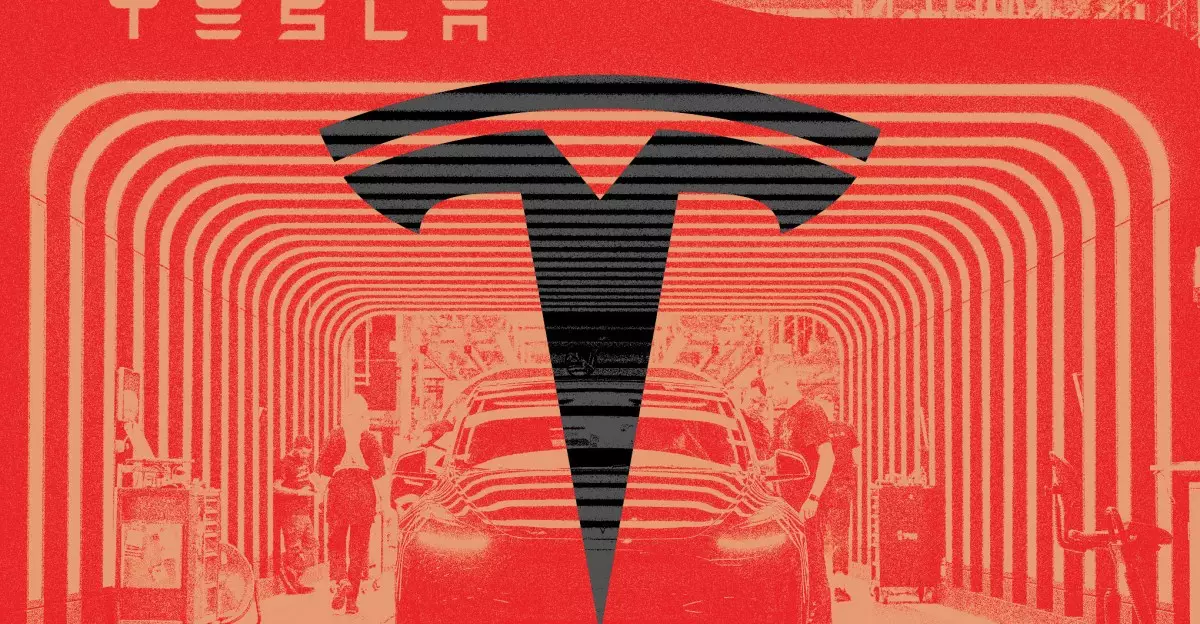Tesla, once synonymous with innovation and market dominance in the electric vehicle (EV) sector, is currently navigating treacherous waters. The company’s sales in Europe have plummeted by nearly 50% over the past year, underscoring an alarming shift in consumer interest and significant strategic missteps. This rapid decline, particularly stark amid a broader increase in the electric vehicle market, reveals that the brand’s challenges extend far beyond simple market fluctuations. Tesla’s troubles prompt a closer examination of their brand image and market strategies, particularly under the intense scrutiny directed at CEO Elon Musk.
While the EV market flourished overall, with sales rising by 26.4% in early 2025, Tesla’s registration figures dropped dramatically to just 7,261 units last April. This staggering decrease points to a brand identity crisis, exacerbated by rising competition from not only established automakers but also aggressive new entrants from China. The automotive landscape in Europe is changing rapidly, and Tesla’s ability to maintain its foothold appears increasingly tenuous.
Failure to Captivate the European Market
The launch of the refreshed Model Y was expected to rejuvenate Tesla’s appeal among consumers, yet it seems the anticipated influx of new customers has not materialized. Despite the advancements, the rollout has not met expectations, leading to questions surrounding the effectiveness of their product development strategies and marketing. It raises the issue: Has Tesla underestimated the sophistication and preference of European consumers?
This apparent disconnect suggests not only a misreading of market demands but also a potential over-reliance on Musk’s personal brand. The reality is that while Musk’s charisma and vision have historically driven the brand’s success, they may no longer be enough to counterbalance the mounting challenges in this competitive market. The serene dominance Tesla once enjoyed feels increasingly fragile as consumers become more discerning and brand loyalty is put to the test.
The Allure of Competition
As traditional automakers and new startups ramp up their electric offerings, Tesla finds itself in a dogfight for market share. European automakers like Volkswagen and BMW are not just catching up; they are defining new benchmarks for electric vehicle innovation, design, and performance. The result is that Tesla is now faced with an increasingly skeptical consumer base that has viable alternatives.
Part of the equation also includes the allure of value. Many competing brands are successfully marketing affordable entry-level EV models, capturing the attention of a broader customer base. The days when Tesla was the obvious choice for groundbreaking electric vehicles are dwindling, leaving it cornered in the premium pricing segment. Without a robust entry-level option, Tesla runs the risk of alienating potential buyers who may have otherwise chosen the brand.
Brand Perception under Siege
Perhaps one of the most concerning aspects of Tesla’s current predicament relates to its brand perception, which appears to be deteriorating sharply. Once lauded as an emblem of sustainable innovation, recent surveys have shown a marked decrease in overall brand reputation. As Musk’s political entanglements with controversial figures become more pronounced, public perception has increasingly shifted.
Recent polls reveal that public sentiment surrounding Musk is no longer overwhelmingly favorable. The once-celebrated image of the audacious entrepreneur has now morphed into one of a polarizing figure whose actions impact the perception of his companies. The link between Musk’s personal brand and Tesla’s corporate identity is proving to be a double-edged sword, where the fallout from his controversial public persona may overshadow the values Tesla aims to represent.
Strategic Miscalculations
In light of these developments, a sense of urgency is palpable. While Musk has asserted plans to stabilize and rejuvenate sales following factory closures, the persistent question remains: Will a redirection of focus toward corporate health be enough? With discussions of diverting resources to artificial intelligence and robotics rather than addressing the immediate sales crisis, there’s a growing concern that Tesla could drift even further from its core mission.
The intricate balancing act between innovation and market stability demands leadership that not only envisions the future but also adeptly navigates the present challenges. As Tesla grapples with these existential threats, it must reevaluate its brand strategy, consumer engagement, and market alignment. The pathway to recovery may require more than just the promise of innovation; it necessitates a commitment to restoring trust and relevance in an ever-evolving automotive ecosystem.

